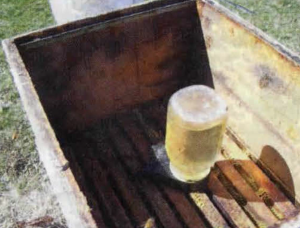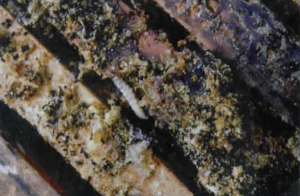By: Ann Harman
This article originally appeared in the Autumn 2019 issue of BEEKeeping Your First Three Years
•October First is Mouse Guard Day. Don’t neglect to put them on.
• Egg-laying diminishes during these next months.
• The brood less time is perfect for Varroa treatments of your choice until daytime temperatures are below 57°F.
• Bees start forming a cluster at 57°F. Do not disturb the cluster.
• Unless in a hot climate, small hive beetles stop reproducing.
• Check each hive for adequate Winter stores.
• Warm climate 40 pounds
• Temperate climate 60 pounds
• Cold climate 90 pounds
• If colonies are disease-free, frames of stored honey can be moved to provide adequate Winter stores. Watch carefully so you do not move the queen!
• For Winter stores, liquid syrup mix is slightly less than 2 parts sugar to one part water.
•No liquid syrup feeding when temperatures are below 57°F.
• Do not leave queen excluders on the hive between hive bodies. Remove for cleaning on a cold day. Wax will snap off. Do not damage in cleaning.
• Inspect queen excluders for damage and discard. The queen will find a bent rod or torn plastic.
• Inspect all equipment for damage. Set aside for repair-or-fix it now!
• Warmer Autumn months are good for repainting.
• Inspect stored comb for damage, excessive drone comb or lumps of cross-comb.
• Protect all stored equipment, including plastic queen excluders, from mice. Check during Winter months.
• Woodenware and brood comb can be placed in plastic bags and frozen for a week to kill wax moth eggs. Leave bagged and protect from mice.
• Clean up the beeyard. Remove discarded pieces of equipment.
• Clear hive entrances of weeds and grass so bees can take cleansing flights.
• Check the electric fence if you live in bear country.
• Wash all bee clothing-veils, jackets, coveralls, gloves. Replace household gloves with new ones.
• Clean up your smoker. Make sure it is free of ashes under the grid.
• Check on hives once a month to see if food stores are adequate. Do not break the cluster!
• If you harvested honey this year use it in cooking, especially during the holiday season.
• Read beekeeping magazines and bee books.









